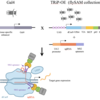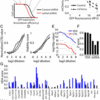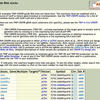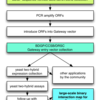Drosophila (fly)
Pooled-format CRISPR screens in Drosophila cells
. 11/16/2017. “Molecular Interaction Search Tool (MIST): an integrated resource for mining gene and protein interaction data.” Nucleic Acids Res, 46, D1, Pp. D567-D574.Abstract
Congrats to Sung, Shears, and colleagues: "Cytokine signaling through Drosophila Mthl10 ties lifespan to environmental stress"
. 12/9/2017. “Zinc Detoxification: A Functional Genomics and Transcriptomics Analysis in Drosophila melanogaster Cultured Cells.” G3 (Bethesda).Abstract
. 12/11/2017. “Cytokine signaling through Drosophila Mthl10 ties lifespan to environmental stress.” Proc Natl Acad Sci U S A.Abstract
Variable Dose Analysis: a new DRSC-supported cell screen approach that leverages existing reagents to perform robust screens
. 10/9/2017. “Accessing the Phenotype Gap: Enabling Systematic Investigation of Paralog Functional Complexity with CRISPR.” Dev Cell, 43, 1, Pp. 6-9.Abstract
Tutorial on DIOPT ortholog search tool scores, ranks and 'best' matches
TRiP-CRISPR stocks now available at BDSC
. 6/1/2017. “MARRVEL: Integration of Human and Model Organism Genetic Resources to Facilitate Functional Annotation of the Human Genome.” Am J Hum Genet, 100, 6, Pp. 843-853.Abstract
Nucleolar image-based screen dataset viewable online with OMERO
. 8/7/2017. “Gene2Function: An Integrated Online Resource for Gene Function Discovery.” G3 (Bethesda).Abstract








